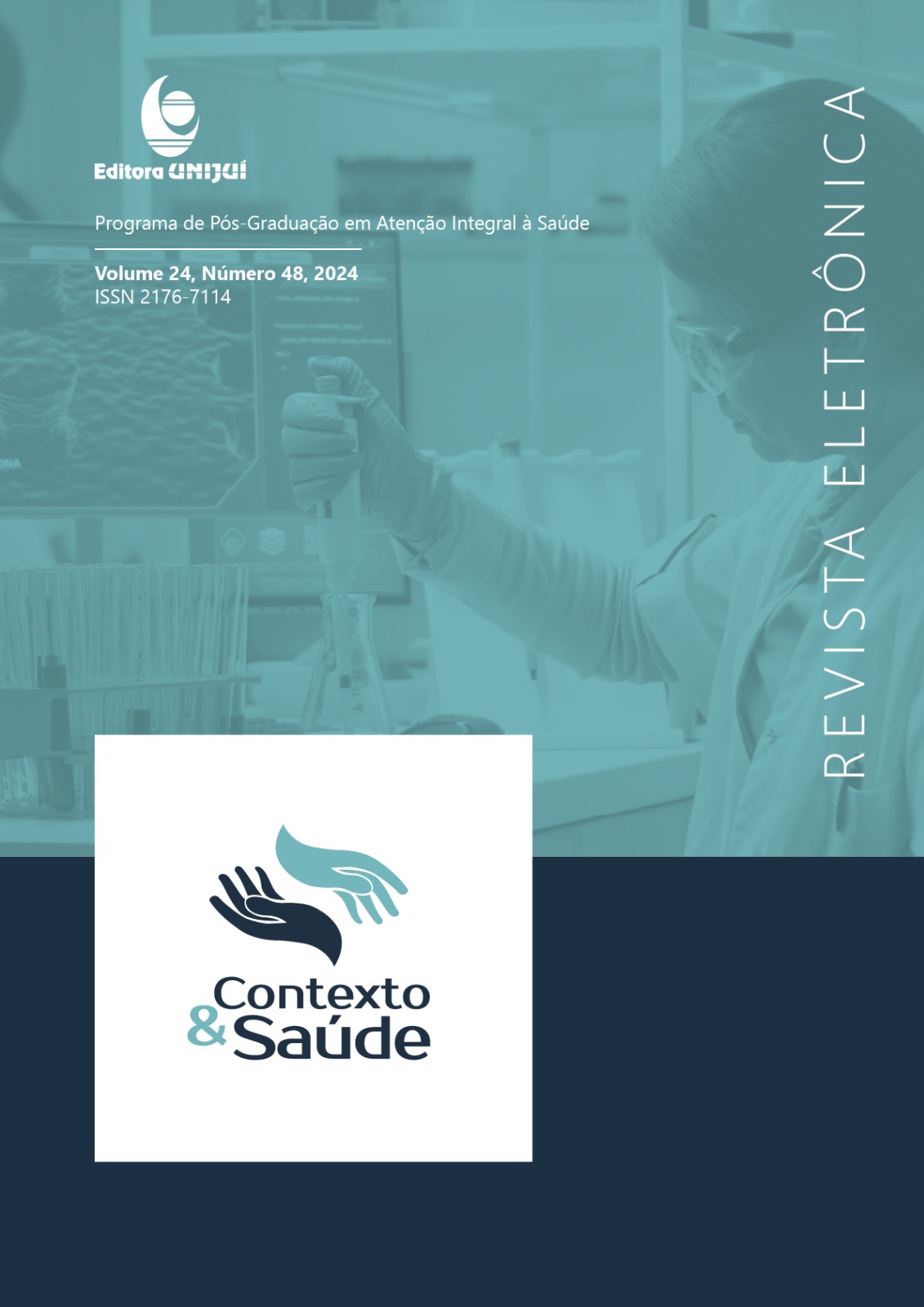Effects of a Game Therapy program with Leap Motion Sensor on the Manual Function in Adults with Cerebral Palsy
DOI:
https://doi.org/10.21527/2176-7114.2024.48.14345Palabras clave:
physiotherapy, cerebral palsy, manual function, virtual reality, leap motionResumen
Hand motor rehabilitation programs require long-term therapy and they are generally uninteresting and repetitive for the patient who is not always motivated to achieve them. The literature shows that Virtual Reality (VR) can increase motivation and engagement in motor rehabilitation programs. The aim of this study was to evaluate the effects of game therapy program for adults with cerebral palsy. The study included five adults with CP, levels 3 and 4 from Manual Ability Classification System (MACS). The manual function was evaluated before and after the game programs by the Box and Blocks and Jebsen-Taylor tests. The program was offered in 15 sessions, twice a week, in a care association for people with CP. The results indicated the stability of the condition, which can be expected for the adult population. Some games were more motivating and through testimonials, participants demonstrated satisfaction and suggested technical changes for better usability of the games. Motivators therapeutic resources should be considered in adult therapy with CP.
Citas
Graham HK, Rosenbaum P, Paneth N, et al: Cerebral palsy. Nature reviews. Disease primers. 2016;2:15082.
Colver A, Fairhurst C, Pharoah PO: Cerebral palsy. Lancet (London, England). 2014;383(9924):1.240-1.249.
Lopes S, Magalhães P, Pereira A, et al: Games used with serious purposes: A systematic review of interventions in patients with cerebral palsy. Frontiers in psychology. 2018;9:1712.
Saunders RJ, Astifidis RP, Burke SL, et al: Rehabilitation of the Hand and Upper Extremity Rehabilitation: a pratical guide. 4th ed. USA: Elsevier; 2016.
Golubović Š, Slavković S: Manual ability and manual dexterity in children with cerebral palsy. Hippokratia. 2014;18(4):310.
Alimanova M, Borambayeva S, Kozhamzharova D, et al: Gamification of hand rehabilitation process using virtual reality tools: Using leap motion for hand rehabilitation. In 2017 First IEEE International Conference on Robotic Computing (IRC). 2017:336-339.
Jebsen RH, Taylor NEAL, Trieschmann RB, et al: An objective and standardized test of hand function. Archives of physical medicine and rehabilitation. 1969;50(6):311-319.
Mathiowetz V, Volland G, Kashman N, et al: Adult norms for the Box and Block Test of manual dexterity. American Journal of Occupational Therapy. 1985;39(6):386-391.
Chiu HC, Ada L, Lee HM: Upper limb training using Wii Sports Resort™ for children with hemiplegic cerebral palsy: a randomized, single-blind trial. Clinical rehabilitation. 2014;28(10):1.015-1.024.
Chen Y, Fanchiang HD, Howard A: Effectiveness of virtual reality in children with cerebral palsy: a systematic review and meta-analysis of randomized controlled trials. Physical therapy. 2018;98(1):63-77.
Shin JH, Kim MY, Lee JY, et al: Effects of virtual reality-based rehabilitation on distal upper extremity function and health-related quality of life: a single-blinded, randomized controlled trial. Journal of neuroengineering and rehabilitation. 2016;13(1):17.
Acar G, Altun GP, Yurdalan S, et al: Efficacy of neurodevelopmental treatment combined with the Nintendo® Wii in patients with cerebral palsy. Journal of physical therapy science. 2016;28(3):774-780.
Romeo DM, Venezia I., Pede E, Brogna C. Cerebral palsy and sex differences in children. A narrative review of the literature. J. Neurosci. Res. 2023. DOI: 10.1002/jnr.25020
Descargas
Publicado
Cómo citar
Número
Sección
Licencia
Derechos de autor 2024 Revista Contexto & Saúde

Esta obra está bajo una licencia internacional Creative Commons Atribución 4.0.
Ao publicar na Revista Contexto & Saúde, os autores concordam com os seguintes termos:
Os trabalhos seguem a licença Creative Commons Atribuição 4.0 Internacional (CC BY 4.0), que permite:
Compartilhar — copiar e redistribuir o material em qualquer meio ou formato;
Adaptar — remixar, transformar e criar a partir do material para qualquer fim, inclusive comercial.
Essas permissões são irrevogáveis, desde que respeitados os seguintes termos:
Atribuição — os autores devem ser devidamente creditados, com link para a licença e indicação de eventuais alterações realizadas.
Sem restrições adicionais — não podem ser aplicadas condições legais ou tecnológicas que restrinjam o uso permitido pela licença.
Avisos:
A licença não se aplica a elementos em domínio público ou cobertos por exceções legais.
A licença não garante todos os direitos necessários para usos específicos (ex.: direitos de imagem, privacidade ou morais).
A revista não se responsabiliza pelas opiniões expressas nos artigos, que são de exclusiva responsabilidade dos autores. O Editor, com o apoio do Comitê Editorial, reserva-se o direito de sugerir ou solicitar modificações quando necessário.
Somente serão aceitos artigos científicos originais, com resultados de pesquisas de interesse que não tenham sido publicados nem submetidos simultaneamente a outro periódico com o mesmo objetivo.
A menção a marcas comerciais ou produtos específicos destina-se apenas à identificação, sem qualquer vínculo promocional por parte dos autores ou da revista.
Contrato de Licença (para artigos publicados a partir de setembro/2025): Os autores mantém os direitos autorais sobre seu artigo, e concedem à Revista Contexto & Saúde o direito de primeira publicação.

